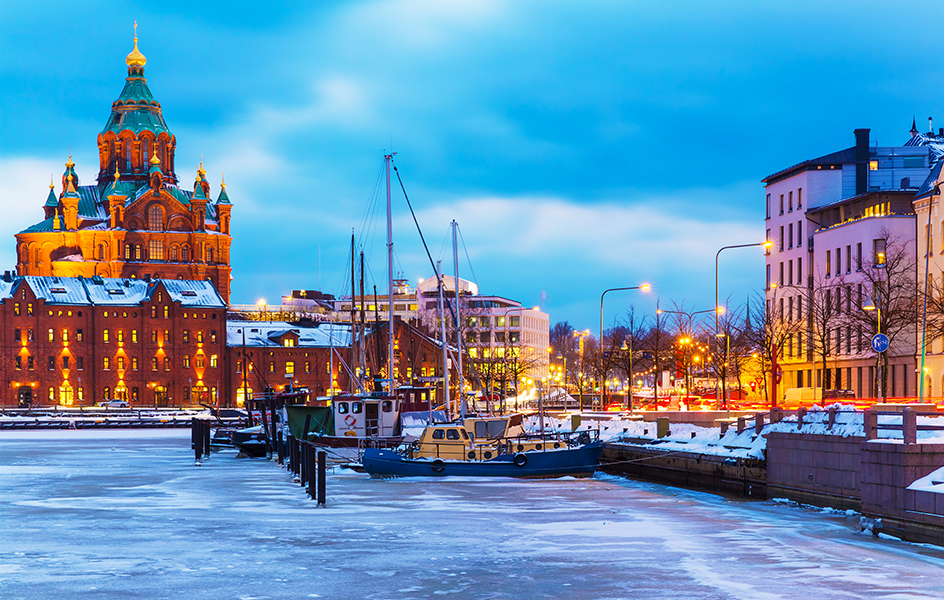Helsinki << HEHL sihng kee or hehl SIHNG kee >> is the capital and largest city of Finland. It is also one of the nation’s chief ports and the heart of its commercial and cultural life. The municipality of Helsinki has a population of 664,028. A municipality may include rural areas as well as the urban center. About 10 percent of the Finnish people live in the Helsinki municipality. The city lies on the southern coast of the country, on the Gulf of Finland, and occupies a peninsula and several islands.

Helsinki is a city of scenic bays and broad, treelined streets. The contrast of old and new architecture adds to its charm. The center of the city’s old section is Senate Square, which has many buildings designed in the neoclassical style of the 1800’s. They include the Government Palace and the towering Lutheran Cathedral. The main business districts of Helsinki are west of Senate Square. These newer sections of the city include buildings designed by some of the finest modern architects. Most of Helsinki’s people live in apartments. In the last half of the 1900’s, many apartment buildings were converted to office buildings. Large numbers of people moved to various suburbs. The suburbs include outstanding examples of city planning.

Universities in Helsinki include Helsinki University of Technology and the University of Helsinki, which is Finland’s principal university. The city has many theaters and several art galleries and museums. Its islands and parks have facilities for boating, skiing, and other sports.
Most of the city’s people work for the government or in commerce, communications, and service occupations. Industrial employment has declined because some manufacturers have moved from the city to the suburbs. But Helsinki remains the main Finnish industrial area. Its chief products include ceramics, clothing, machinery, paper, plywood, refined sugar, and ships.
Helsinki was founded in 1550 by King Gustav I Vasa of Sweden, which then ruled Finland. Russia and Sweden fought numerous wars in Finland from the 1500’s through the 1700’s, and Helsinki twice was nearly destroyed in the fighting. The city passed from Swedish to Russian rule in 1809. In 1812, Czar Alexander I made Helsinki the capital of Finland and ordered a large-scale program of city planning and construction. Many of the impressive buildings around Senate Square were erected at that time. By 1900, Helsinki had become an industrial city with a population of more than 100,000.
Finland gained independence from Russia in 1917, and the Helsinki region began to increase in population and commercial importance. Today, Helsinki is the site of many international conferences. A striking convention center in the city is built in the shape of a grand piano.
